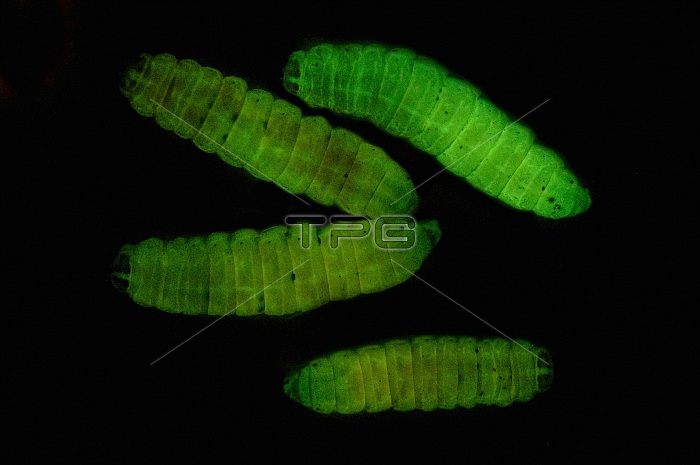
This wax moth larva (Galleria mellonella) glows in the dark after death. The interactions between species that led to a glowing bug corpse are intricate. It all began when a pradatory nematode (Heterorhabditis bacteriophora) bored into the body cavity of the grub. The nematode stores an obligate symbiotic bacteria (in this case Photorhabdus sp.) in its gut. A small amount of this bacteria is expelled inside the live grub. In an interesting twist that science has not yet found an answer for, the bacteria is bioluminescent. The bacteria proliferate, killing and digesting the grub. All the while, the corpse of the grub glows by the illumination of the bacteria inside of it. The nematode feeds on the decomposing grub and the bacteria, ultimately depositing eggs in the grub. All of the hatching nematodes will inoculate special areas in their guts with the bacteria to move out of the corpse and hunt on their own. This is an important association for the bacteria because it has never been found outside of a glowing grub. Moth larva is pproximately 1" in length.
| px | px | dpi | = | cm | x | cm | = | MB |
Details
Creative#:
TOP22006657
Source:
達志影像
Authorization Type:
RM
Release Information:
須由TPG 完整授權
Model Release:
N/A
Property Release:
No
Right to Privacy:
No
Same folder images:

 Loading
Loading